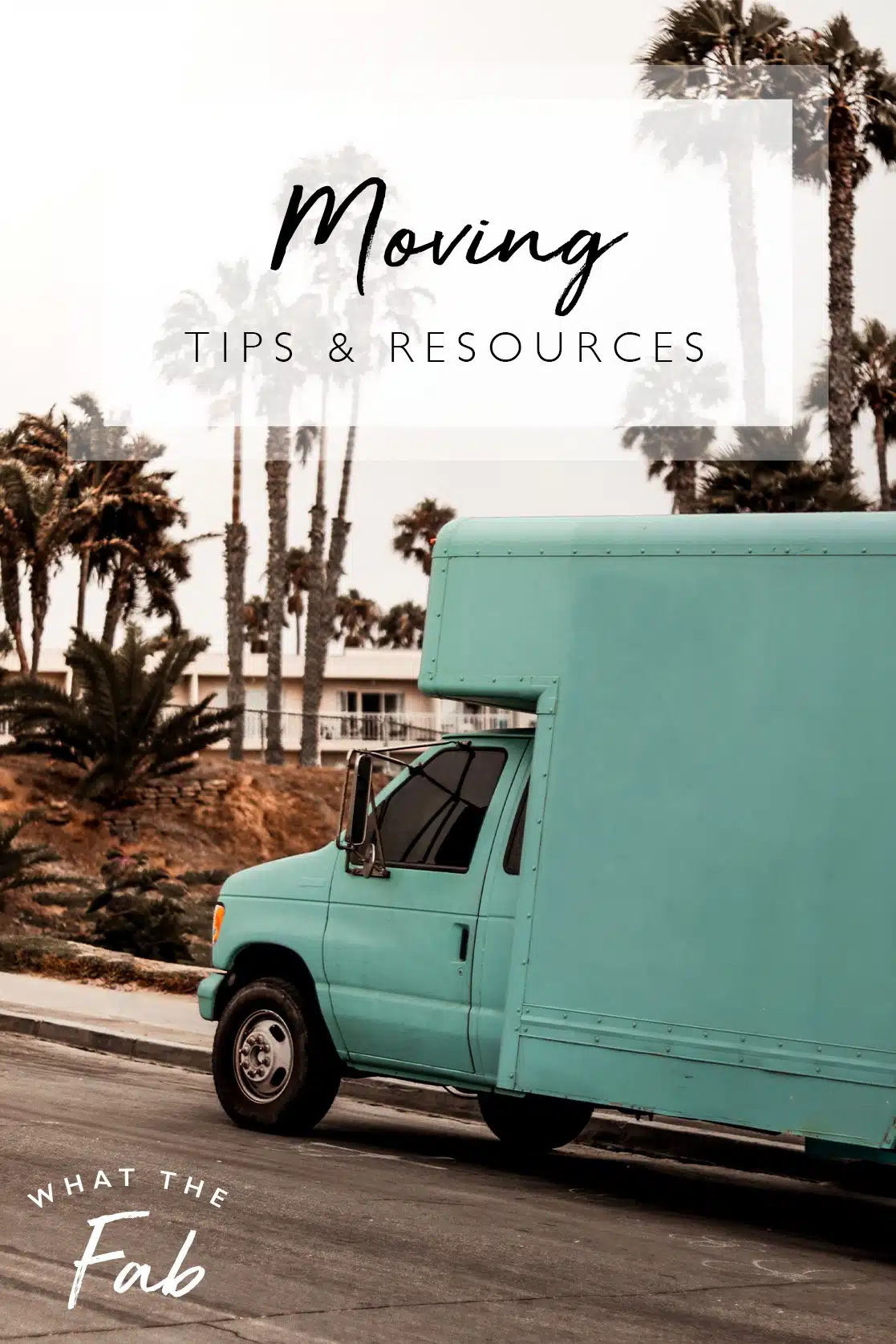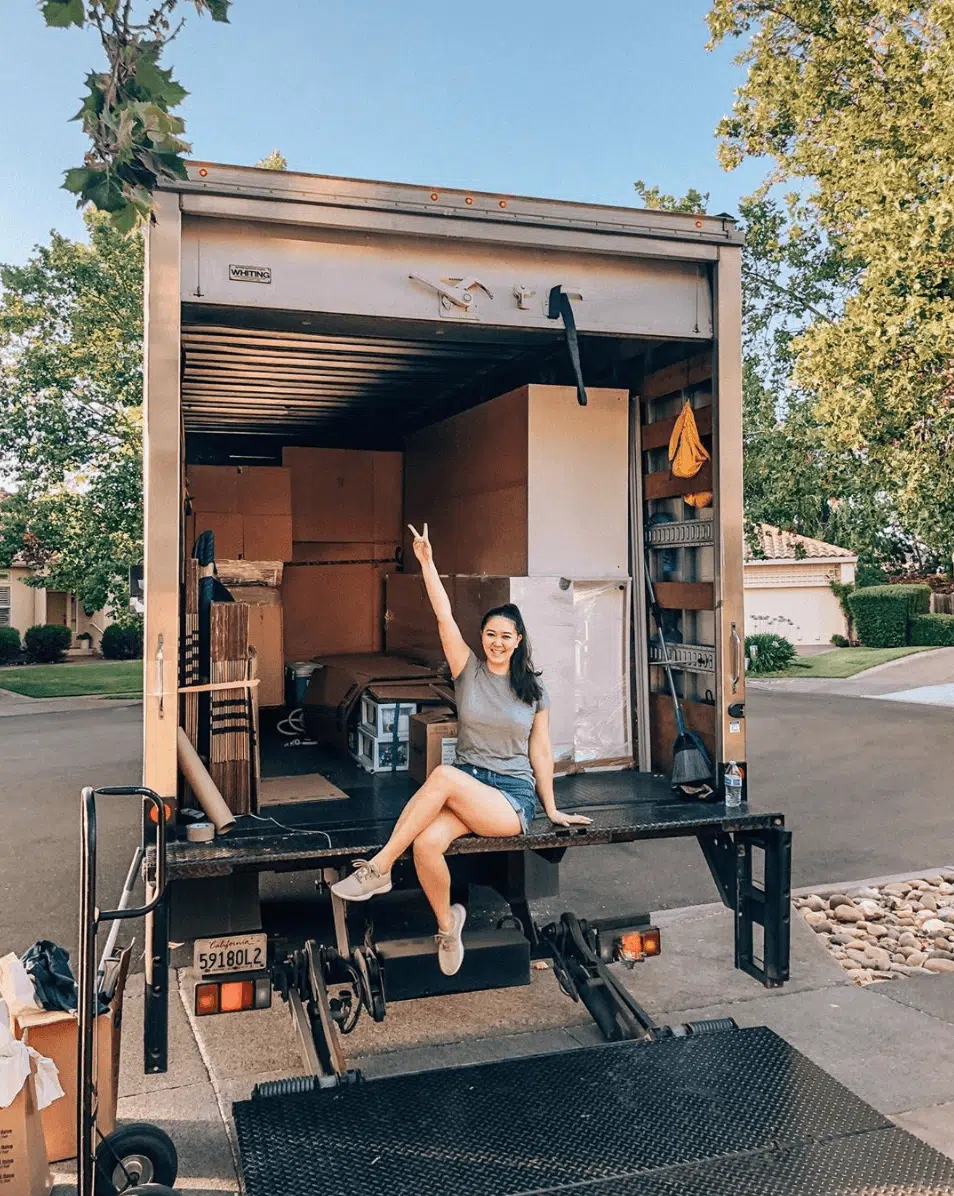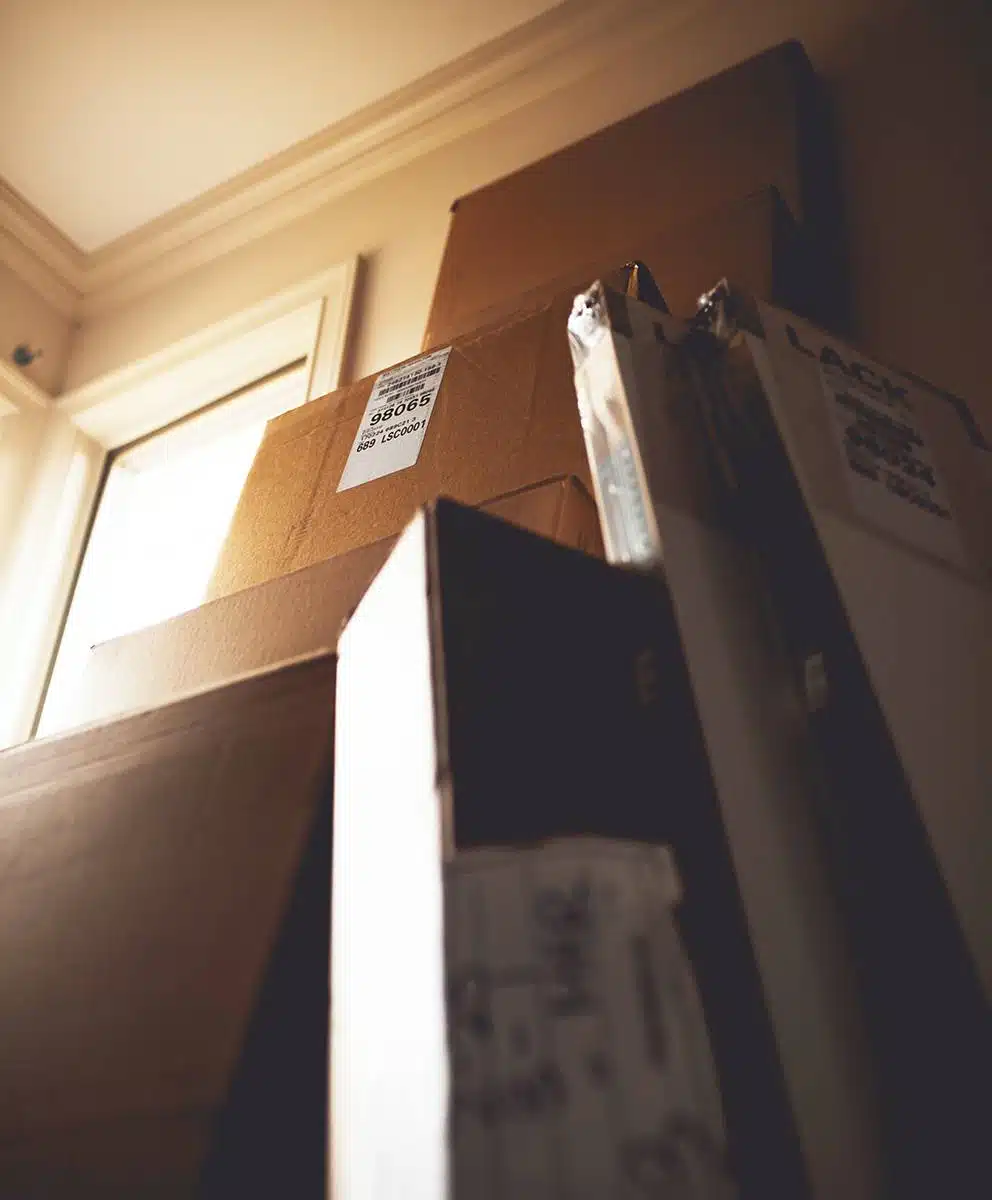
Since our move is fresh, I’m sharing a bunch of moving out tips today! Thanks to the pandemic, the number of people moving out of big cities has surged to record highs, with NYC, SF, and LA seeing the biggest exodus.
We’re definitely included in that group of people who during the pandemic realized it was time for us to leave San Francisco. The change of pace and having actual space and a backyard has been life-changing. We’re loving life in Napa!

Our first apartment in SF ended up being where we stayed for almost a decade. Since we hadn’t moved in so long, I forgot how much of a pain moving is! And we only had a one-bedroom—it’s obviously even more of a headache when you’re moving from a larger apartment or a house.
While we were going through the moving process, I made a ton of notes with tips and lessons learned so that I could share them with you, in case you’re getting ready for a move too.
Here are a bunch of my moving out tips and resources for you! Whether you’re moving to a new apartment or a new home, I hope they help make moving day a breeze.
1. Hire movers.
This was our first time hiring a moving company and I’m literally never moving without one again. We went with Impel Moving for our Bay Area move, and the team did an awesome job. Their communications before the move were speedy, and they were super professional. They also brought a lot of extra packing supplies, like small boxes for heavy/fragile kitchen things and wardrobe boxes. They wrapped up all our furniture before loading into their moving truck and bringing it to our new place. I also recommended them to a friend who hired Impel Moving for her move as well (same situation—leaving the city for the North Bay) and she had a great experience with them as well.
If you’re outside of the Bay Area and looking for movers, I definitely recommend using Yelp’s Request a Quote feature—you’ll receive quotes from a bunch of different movers and that will save time so you’re not researching/reaching out to potential movers on a one-off basis.
In general and especially during summer months, you’ll want to book your moving company at least a month in advance, if not more.
Always make sure the company you’re considering has a certified license as well as insurance.
2. Make a moving checklist
There’s so much to do and plan for when you’re moving from one place to the next, and it can get very overwhelming quickly. At first, I wasn’t even sure where I should start, but I did some research and found some helpful checklists, which I used to make my own list. I made a copy of my moving checklist for you in Google Sheets, so feel free to check out the spreadsheet and make your own copy so you can use it! You can thank my Google days for the drop-down menus and automatic color coding—it’s really satisfying when a task turns from red to green. 😉
This moving checklist should have everything you need to think about and do for a smooth move—from stopping your automatic rent payments to setting up utilities at your new place. I also included a few items on there that I didn’t know about before and wished someone had told me to add to my checklist—like did you know that the city takes away your old garbage and recycling bins and you have to call them to get new ones and pay for them? As a first time home-owner, I had no idea and was surprised when the bins were taken away, lol.
3. Use Nextdoor to get moving supplies, and place an order on U-Haul to fill in the rest
If you have time, you can definitely get a lot of moving boxes and bubble wrap from people on Nextdoor, but you probably won’t be able to get everything you need. I made an order for large boxes and a couple of rolls of bubble wrap from U-Haul, and between that and the smaller boxes and wrapping I was able to get from people on Nextdoor, we were set.
From my experience, you’ll need more small boxes than you think! Heavy things like books need small boxes, and all your kitchen stuff (especially the fragile items) will need small boxes too.

4. Label your boxes
At the very least, label what room or area each box should go in. But after our move, I would definitely recommend doing some kind of color-coding system, like these color-coding dots. The reason being, even though I labeled some boxes with things that were obvious to me, it wasn’t always obvious to the movers.
For example, I had labeled all my/Omied’s clothes with “walk-in closet,” and intended for them to go in our closet in the master bedroom upstairs. Some of those boxes got placed by the movers by the large downstairs closet. Whoops.
Fortunately, I happened to notice and asked the movers to bring them upstairs, but if I hadn’t caught that we’d have had a bunch of heavy boxes full of clothes (and you know I have a lot of clothes) that we would have had to lug upstairs ourselves. Having a color-coding system and a key for yourself will make it easy to spot if some boxes need to be moved to another room or floor. There’s a lot going on on moving day, so you won’t be able to check and direct every single box.

5. Hire a TaskRabbit.
Hiring a TaskRabbit is another great way to save time while you’re packing. They can definitely help with things like wrapping up and packing your fragile kitchen items, or packing your clothes in boxes.
6. Get a parking permit for the moving truck.
This one is obviously for city-dwellers. If the moving truck is double-parked or blocking a driveway, you risk getting a ticket. Our building had a very large driveway that was 3 – 4 cars across, so we didn’t file for a parking permit (it does cost a couple hundred dollars) and just used that space. But since there happened to be construction going on, the moving truck had to move a couple of times to get out of the way, which on a small SF street took a while and definitely delayed things.

7. Make sure you are on top of your landlord/apartment things.
If you’re moving from an apartment and you have a nice landlord/property management company you deal with, well, congrats. You’re probably in the minority. Ours was a cheap mofo and a pain, and the management company kept surprising us by screwing things up. Here’s what we had to watch out for:
- Pro-rated rent. Check your lease to understand how far in advance you need to give your apartment notice that you’re moving out. If you’re not moving out on the last day of the month, they should pro-rate your rent for you.
- Pro-rated parking. Even though we had communicated with the apartment management company about prorating since we were moving on the second day of the month, for some reason they tried to charge us for an entire month of parking. We had to follow up several times for them to fix this.
- Getting your deposit back. Ask them specifically what they will be looking for when determining how much of your deposit you’ll get back. For us, it was mostly clean appliances, since the owner was planning on remodeling our unit and using our crappy old appliances at some presumably crappier apartment building. And then double-check the amount you receive—ours was short by $100 and we had to call them to get the rest of it. Fun!
Those are all my moving out tips! It’s a total pain and I don’t know anyone who enjoys it, but hopefully, these tips and resources help!
Looking for more lifestyle content? Find it here!

Elise Armitage is an entrepreneur and founder of What The Fab, a travel + lifestyle blog based in California. At the beginning of 2019, Elise left her corporate job at Google to chase her dreams: being an entrepreneur and helping women find fabulous in the everyday. Since then, she’s launched her SEO course Six-Figure SEO, where she teaches bloggers how to create a passive revenue stream from their website using SEO. Featured in publications like Forbes, Elle, HerMoney, and Real Simple, Elise is a firm believer that you can be of both substance and style.



